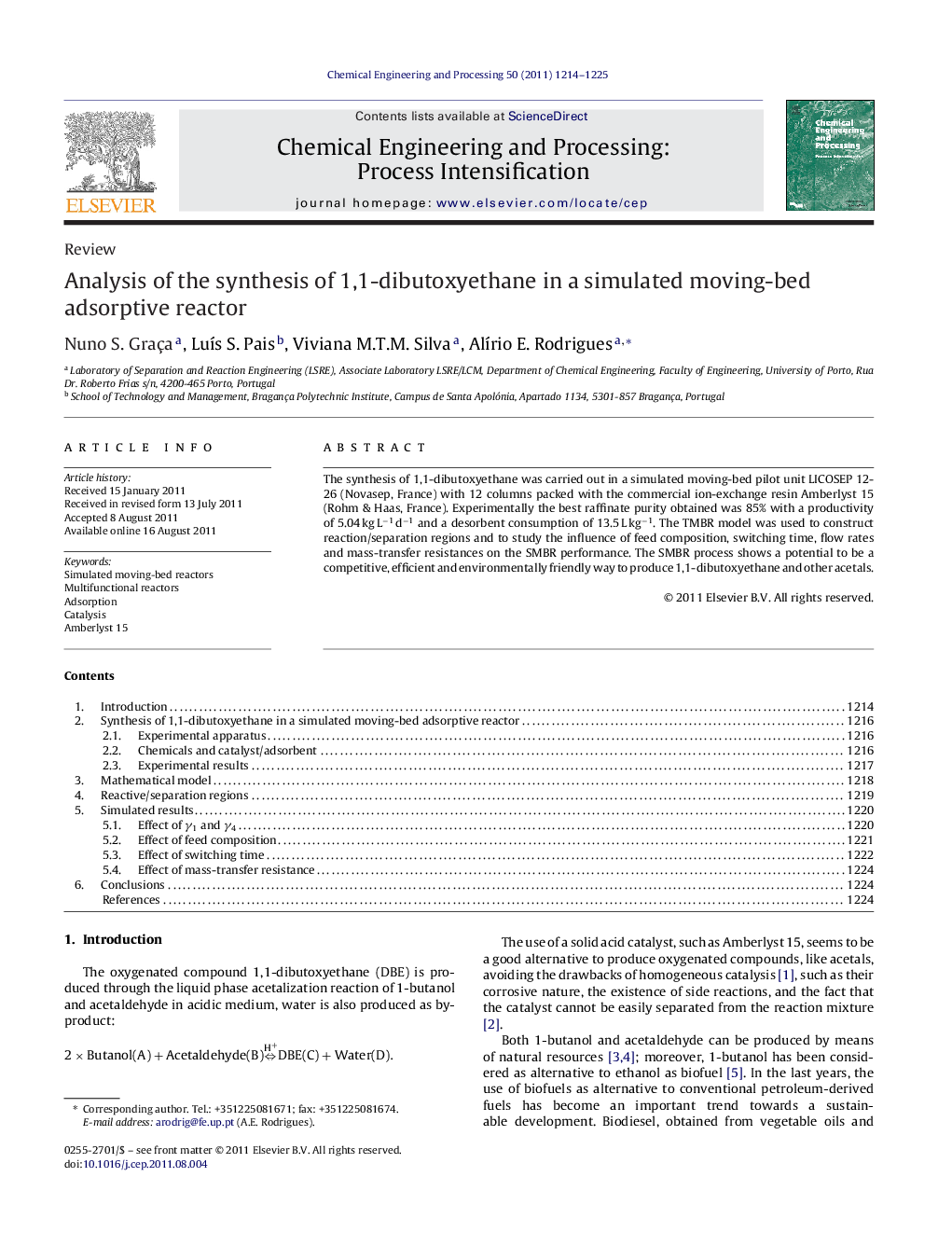| Article ID | Journal | Published Year | Pages | File Type |
|---|---|---|---|---|
| 688406 | Chemical Engineering and Processing: Process Intensification | 2011 | 12 Pages |
The synthesis of 1,1-dibutoxyethane was carried out in a simulated moving-bed pilot unit LICOSEP 12-26 (Novasep, France) with 12 columns packed with the commercial ion-exchange resin Amberlyst 15 (Rohm & Haas, France). Experimentally the best raffinate purity obtained was 85% with a productivity of 5.04 kg L−1 d−1 and a desorbent consumption of 13.5 L kg−1. The TMBR model was used to construct reaction/separation regions and to study the influence of feed composition, switching time, flow rates and mass-transfer resistances on the SMBR performance. The SMBR process shows a potential to be a competitive, efficient and environmentally friendly way to produce 1,1-dibutoxyethane and other acetals.
► 1,1-dibutoxyethane synthesized in a simulated moving-bed adsorptive reactor.► Reaction catalyzed by the ion-exchange resin Amberlyst 15. ► The maximum raffinate purity obtained experimentally was 85%. ► Both SMBR and TMBR models provide a good representation of SMBR operation. ► The influence of the different SMBR operation parameters was studied.
